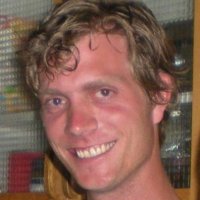Guest lectures and seminars - Page 115
Framed correspondences were invented and studied by Voevodsky in the early 2000-s, aiming at the construction of a new model for motivic stable homotopy theory. Joint with Ivan Panin we introduce and study framed motives of algebraic varieties basing on Voevodsky's framed correspondences. Framed motives allow to construct an explicit model for the suspension P1-spectrum of an algebraic variety. Framed correspondences also give a kind of motivic infinite loop space machine. They also lead to several important explicit computations such as rational motivic homotopy theory or recovering the celebrated Morel theorem that computes certain motivic homotopy groups of the motivic sphere spectrum in terms of Milnor-Witt K-theory. In these lectures we shall discuss basic facts on framed correspondences and related constructions.
Stereolithography - A Powerful Tool to Create almost Everything
Stereolithography or "SLA" printing is a powerful and widely used 3D printing technology for creating prototypes, models, and fully functional parts for production. This additive manufacturing process works by focusing an ultraviolet (UV) laser onto a vat of liquid resin. Layer by layer formation of a polymeric network allows printing parts that are almost impossible to create with other processes.At Formlabs, a startup that originated out of the MIT Media lab in 2011, we work on all aspects of SLA printing; we develop and manufacture 3D printers, resins, and software. In this talk, I will give a detailed overview of the printer technology, the chemistry of the materials, and how to use SLA for lots of exciting applications.
Abstract: We first discuss C*-simplicity and the unique trace property for discrete groups in light of recent years' development. In particular, we consider amalgamated free products, and give conditions for such to be (and fail to be) C*-simple. Then we define radical and residual classes of groups, and explain that there exists a radical detecting C*-simplicity, in a similar way as the amenable radical detects the unique trace property. The talk is based on joint work with Nikolay A. Ivanov from Sofia University, Bulgaria.
Hopkins, Kuhn, and Ravenel proved that, up to torsion, the Borel-equivariant cohomology of a G-space with coefficients in a height n-Morava E-theory is determined by its values on those abelian subgroups of G which are generated by n or fewer elements. When n=1, this is closely related to Artin's induction theorem for complex group representations. I will explain how to generalize the HKR result in two directions. First, we will establish the existence of a spectral sequence calculating the integral Borel-equivariant cohomology whose convergence properties imply the HKR theorem. Second, we will replace Morava E-theory with any L_n-local spectrum. Moreover, we can show, in some sense, a partial converse to this result: if an HKR style theorem holds for an E_\infty ring spectrum E, then K(n+j)_* E=0 for all j\geq 1. This partial converse has applications to the algebraic K-theory of structured ring spectra.

